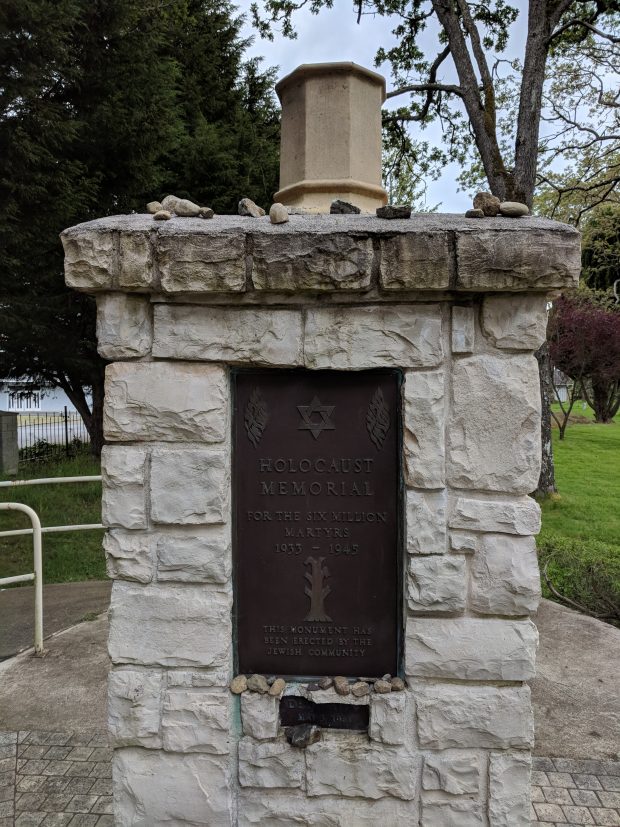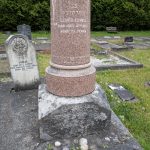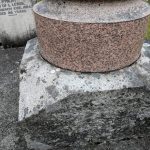May 17th was our first day of the field school actually spent in the field, at Emanu-el cemetery. Personally, it was also the first time that I can remember having ever been in a cemetery, something I only realized when I sat down to write this post. I have been very fortunate to have never needed to enter one before – and even more fortunate to have my first experience be an academic one, instead of personal.
The first part of the morning was spent touring and learning the layout of the cemetery, followed by Dr. McGuire explaining how we will go about documenting and recording the monuments. A little later, Carl Hughes from Meadowlark Memorials walked us around the cemetery, explaining the different types of stone used in monuments, the sorts of environmental damage they face, and the different ways to clean and restore damaged monuments. It was during these tours and lectures that I started to notice the small stones placed on many of the monuments, and it struck me why this project is important; especially to Victoria’s Jewish community.

Holocaust Memorial near the cemetery gate. There are more stones not visible on the sides and back, and even more placed in the relief on the rear. (Photo by David)
As we learned from Rabbi Harry when we met with him last week, it is not common to place flowers on grave sites in Jewish tradition. Instead, when someone wants to signify they have visited a grave, they will leave a small stone on or around the monument. The Holocaust Memorial, for example, is near the cemetery gate and has many stones on it; clearly it gets heavily visited. Further in, many of the memorials have stones placed on or around them and many have possibly had stones placed on them that have since fallen off due to natural forces.

Lewis Lewis and Philip Lewis memorial. Stones are visible at the bottom of the Lewis Lewis monument; barely visible in this photo are a small collection of Canadian coins. (Photo by David)
One of the most interesting examples in the cemetery is the memorial to Lewis Lewis. While leaving stones to signify that the grave has been visited is common, using coins to do so is not. Dr. McGuire mentioned the coins in our meeting with Rabbi Harry, who explained that it was not something he had ever heard of being done. The only references I could find with admittedly limited research involved leaving coins at the graves of soldiers, to signify a connection with another soldier. Much of the information I did find seems like hearsay at best, and in any event wouldn’t apply in the case of Lewis Lewis. Leaving coins clearly has meaning for someone, however, just as the leaving of small stones does.
Why this all struck me as being so important is because it all demonstrates that this is not just a graveyard. It is a place actively visited by the community; those buried here are still remembered and visited. For us in ANTH367, this project is part of a field school to teach us useful archaeological skills. But for Victoria’s Jewish community, this project is an important part of preserving, and in many cases restoring, history.
It’s hoped that this might be the last year the field school runs in this cemetery – that after we finish up this summer, all the graves and monuments will be documented. At that point, the Congregation Emanu-el can hopefully use the information gathered to repair, restore and preserve the monuments and grave sites so that future members can maintain their connection to the past, and continue to honour the members of their community.
